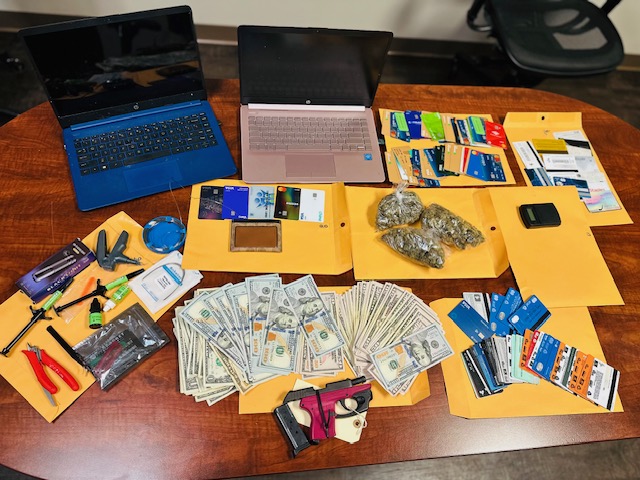Exposed: The Social Media 'Tap-In' Scam and Its Devastating Consequences
TL;DR
- Janetcilize Martinez, 24, was arrested in Tampa, FL, for allegedly orchestrating a ‘tap-in’ scam, defrauding over a hundred victims through social media.
- The scam involves depositing fraudulent checks into victims’ accounts and withdrawing funds before the checks bounce, leaving victims liable for the stolen money.
- Martinez faces multiple charges, including possession of credit card making equipment and fraudulent use of personal information.
The ‘Tap-In’ Scam: A Modern Twist on an Old Fraud
Would you hand over your credit card to a stranger in exchange for the promise of easy money? Neither would we. However, over a hundred people apparently did. The Hillsborough County Sheriff’s Office arrested 24-year-old Janetcilize Martinez in Tampa, FL, for allegedly using willing participants’ bank accounts to commit fraud.
How the ‘Tap-In’ Scam Works
Police are calling this a ‘tap-in’ scam, a fraudulent scheme that is unfortunately not uncommon. Here’s how it typically unfolds:
-
Recruitment: The scammer advertises an opportunity to make fast, easy money by providing access to your bank account. They often describe the process, including the fraudulent steps, and offer a cut of the proceeds.
-
Access Granted: The participant, who unknowingly becomes the victim, hands over their debit card or other access credentials.
-
Fraudulent Deposit: The scammer uses this access to deposit a fraudulent check into the participant’s account.
-
Cash Out: The scammer then withdraws the money before the bank realizes the check is fraudulent.
-
The Bounce: This is the step the scammer omits. The check bounces, and the victim is left liable for the stolen money.
This scheme is essentially a third-party version of check kiting, where fraudsters write bad checks to themselves from another bank account, deposit them, and then withdraw the money.
The Chase Bank ‘Infinite Money Glitch’ Incident
Hundreds of people on TikTok and X fell victim to a similar scam last year. They were told about an apparent “infinite money glitch” at Chase Bank, which turned out to be non-existent. These individuals were merely exploiting the standard fund availability window to collect money on fraudulent checks.
Why Check Kiting Works (Temporarily)
Check kiting frauds rely on quick access to cash from deposited checks. By law, U.S. banks must make $275 of the deposited funds available within one business day, with the rest available within two business days. Banks can only place a further hold on funds under specific circumstances, such as a new account, a pattern of overdrawn activity, or if the check exceeds $6,725.
The Downside of Check Kiting
Ultimately, if you deposit a fraudulent check, the bank will realize the check hasn’t cleared and will deduct the balance from your account. Those who thought they could exploit the Chase ‘glitch’ ended up with negative balances. In reality, they were using theft to give themselves an illegal loan, which can result in losing your account or even facing criminal charges.
The Arrest and Charges
Martinez, who was reported to the police anonymously, allegedly advertised these tap-in services on social media, posting pictures of cash and withdrawal receipts. When detectives executed a warrant at her residence on July 29, they found:
- 117 credit cards belonging to other people
- Tools for creating counterfeit credit cards
- Nearly $7,000 in cash
- Cannabis and associated paraphernalia
- A semi-automatic weapon
Martinez now faces the following charges:
- Possession of credit card making equipment
- Unlawful possession of personal identification of another (five or more)
- Fraudulent use of personal information
- Possession of drug paraphernalia
- Possession of cannabis (more than 20 grams)
- Possession of cannabis with intent to sell, manufacture, or deliver
Martinez has not yet been found guilty of these crimes. She has been given bond release pending trial but is being held without bond in another case, according to reporters for Fox 13.
Conclusion
The ‘tap-in’ scam is a stark reminder of the dangers lurking on social media. It’s crucial to remain vigilant and skeptical of too-good-to-be-true offers. Always remember, if it sounds too good to be true, it probably is.
For more details, visit the full article: source
Additional Resources
For further insights on protecting yourself from such scams, check out these resources:
